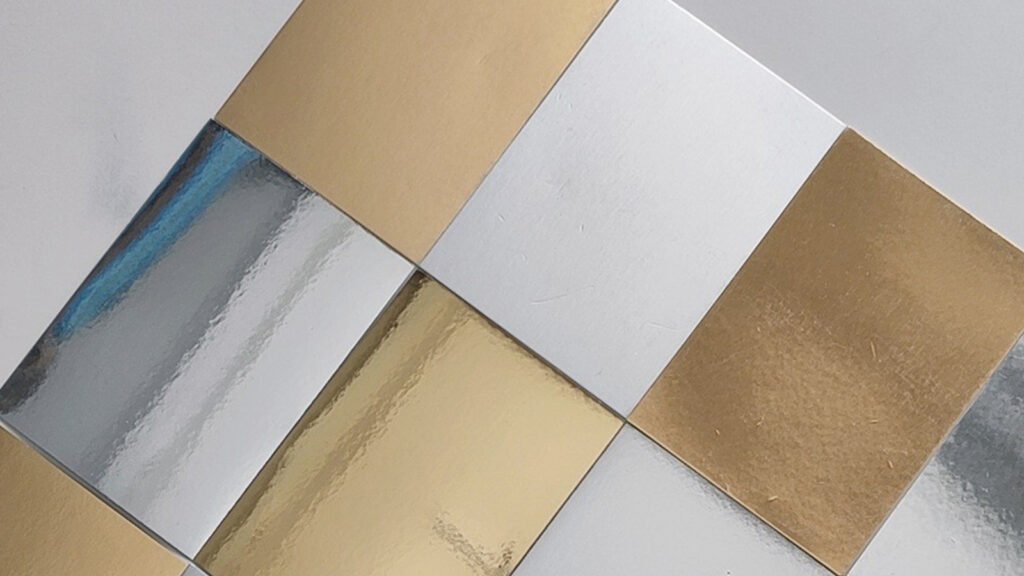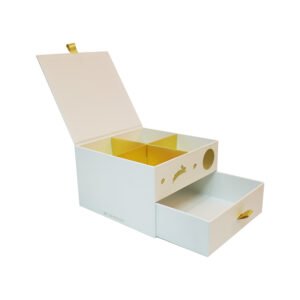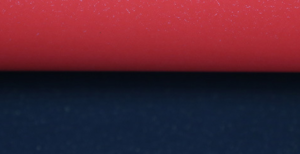
Introduction
Paper packaging is a cornerstone of modern industries, combining functionality with sustainability. Understanding the types of Paper Packaging Materials available can help businesses choose solutions that align with their durability, eco-friendliness, and design needs. Let’s explore these materials in depth.
The Importance of Paper Packaging in Modern Business
The demand for eco-conscious and cost-effective packaging has made paper materials essential in various industries. They provide a balance of strength and versatility, ensuring products are protected while reducing environmental impact.
Benefits of Choosing Paper Packaging Over Other Materials
Paper packaging offers unmatched recyclability, biodegradability, and customizability. Compared to plastic or metal options, it strikes an ideal balance between functionality and environmental stewardship.
Corrugated Paper: The Backbone of Durable Packaging
What is Corrugated Paper?
Corrugated paper consists of a fluted corrugated sheet sandwiched between two linerboards, creating a structure that is both lightweight and strong.
Key Features That Make Corrugated Paper Ideal for Shipping
- Superior cushioning to protect fragile items
- Lightweight design reduces shipping costs
- Highly adaptable to various box shapes and sizes
Types of Corrugated Paper and Their Specific Uses
- Single-Wall Corrugated: Perfect for lightweight items.
- Double-Wall Corrugated: Suitable for heavier products.
- Triple-Wall Corrugated: Offers maximum durability for industrial use.
Sustainability Benefits of Corrugated Paper
Made primarily from recycled materials, corrugated paper is one of the most eco-friendly packaging solutions available today.
Cardboard: A Versatile Packaging Material
Understanding the Difference Between Cardboard and Corrugated Paper
While often used interchangeably, cardboard refers to thick paper stock, whereas corrugated paper has a fluted layer for added strength.
Top Industries That Rely on Cardboard for Packaging
- Retail: For product displays and boxes.
- Food: Ideal for pizza boxes and bakery containers.
- E-commerce: Commonly used for mailers and shipping boxes.
Custom Design Opportunities with Cardboard
Its smooth surface is perfect for printing vivid graphics and branding elements, enhancing consumer appeal.
Environmental Impact of Cardboard and Recycling Best Practices
Recycling cardboard reduces landfill waste and conserves energy, making it a vital component of a circular economy.
Kraft Paper: The Eco-Friendly Powerhouse
What Sets Kraft Paper Apart from Other Packaging Materials?
Kraft paper is made from chemical pulp during the kraft process, giving it exceptional strength and durability.
Strength and Flexibility: Applications of Kraft Paper
- Wrapping heavy items like furniture and industrial parts.
- Crafting bags for groceries and retail.
- Using as void fill in shipping boxes.
How Kraft Paper Supports Sustainable Packaging Goals
Its biodegradability and recyclability make it a favorite among environmentally conscious brands.
Designing Stylish and Minimalist Packaging with Kraft Paper
Kraft’s natural brown color lends itself to rustic and eco-friendly designs that resonate with modern consumers.
Coated Paper: A Perfect Blend of Function and Aesthetics
What is Coated Paper and Why is it Used in Packaging?
Coated paper has a layer of clay or polymer applied to its surface, enhancing smoothness and print quality.
Types of Coatings and Their Impact on Packaging Performance
- Gloss Coating: Provides a shiny finish for vibrant prints.
- Matte Coating: Offers a subtle, elegant look.
- UV Coating: Adds a layer of protection against moisture and scratches.
Applications of Coated Paper in Premium and Retail Packaging
Commonly used for gift boxes, brochures, and high-end product labels.
Balancing Eco-Friendliness with the Use of Coated Paper
Opting for water-based or biodegradable coatings can mitigate environmental concerns.
Greyboard: The Choice for Sturdy and Premium Packaging
Introduction to Greyboard and Its Key Characteristics
Greyboard is a rigid material made from recycled paper pulp, offering superior durability and thickness.
Why Greyboard is Ideal for Luxury and High-End Products
- Ensures structural integrity for heavy items.
- Provides a premium look and feel.
- Perfect for products like perfumes, electronics, and jewelry.
Creative Ways to Incorporate Greyboard into Packaging Designs
Die-cutting and lamination techniques can turn greyboard into eye-catching, custom shapes.
Recyclability and Sustainability Considerations for Greyboard
Though sturdy, greyboard is recyclable, supporting green packaging goals.
Comparing the Different Paper Packaging Materials
Durability and Strength: Which Material Holds Up Best?
Corrugated paper excels in shipping; greyboard leads in premium packaging.
Eco-Friendliness Across the Paper Packaging Spectrum
Kraft paper offers the most natural and biodegradable option, while coated paper needs careful disposal practices.
Cost-Effectiveness: Finding the Right Balance
Cardboard is the most affordable for general use, but the material choice depends on product requirements.
When to Use Each Material: A Practical Guide
Select corrugated paper for shipping, kraft for eco-conscious consumers, and coated paper for luxury branding.
Innovative Trends in Paper Packaging
Advancements in Recyclable and Biodegradable Coatings
New technologies are emerging to make coated paper more sustainable.
Creative Uses of Paper Packaging in Branding
Brands are leveraging custom designs and bold colors to make packaging memorable.
The Rise of Minimalist and Sustainable Packaging Designs
Simplicity and eco-friendliness are driving consumer preferences in packaging.
Conclusion
Tips for Choosing the Best Paper Packaging for Your Needs
Consider your product’s weight, fragility, and target audience. Prioritize sustainability without compromising on design.
The Future of Paper Packaging in a Sustainable World
With innovations and an increasing focus on environmental responsibility, paper packaging is poised to remain a key player in the packaging industry.



